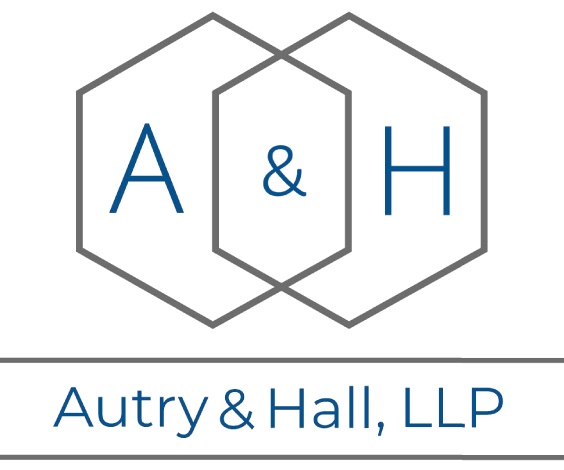Because cooperatives and limited liability companies (LLCs) both designate their owners as “members,” groups deciding whether to use a cooperative structure may experience some confusion when considering the LLC as an alternative. To add to the potential confusion, groups might also decide to use a LLC, but structure it as a cooperative for governance and tax purposes. This post explores the similarities and the key differences to assist with understanding what it means to be a member of a cooperative and a member of an LLC.
A. Purpose and Objectives
Cooperatives: Owned by and Operated for Their Members
Cooperatives are businesses formed to serve their members’ shared needs. The cooperative’s members both own the cooperative and are the primary customers and beneficiaries of the cooperative.
- While cooperatives may also provide goods and services to non-members, the main focus is on the members, whether providing goods and services to members at affordable prices, or providing an avenue for members to sell goods and services to third parties.
- As examples, housing cooperatives provide affordable housing to their members, and electric cooperative provides electricity to members in areas that might not otherwise be served by for-profit utilities, while producer cooperatives give members a source for obtaining better prices for their goods and services through sales to third parties.
- This contrasts with LLCs, which are typically formed to provide goods and services to third parties, and not their members.
Cooperatives emphasize democratic governance and prioritize member benefits over profit maximization.
LLCs: Profit-Oriented Goals
LLCs are designed for flexibility and profit generation. They can have diverse purposes, but their primary focus is typically on generating financial returns for their members (their owners).
- LLCs allow their members to structure the business in ways that maximize efficiency, tax advantages, and profitability.
- LLCs can be used for almost any type of business, such as real estate, hair salons, trucking firms, repair shops, furniture stores, etc.
- Unlike cooperatives, which are focused on providing services to their members, LLCs are focused on providing goods and services to third parties and providing profits for their members (owners) in doing so.
B. Ownership and Membership
Cooperative Membership
- Equal Ownership: In most cooperatives, each member has an equal ownership stake, regardless of their financial contribution.
- Shared Benefits: Members benefit based on their use of the cooperative, not their ownership stake. For instance, in a worker cooperative, profits might be distributed pro rata based on hours worked.
- Democratic Participation: Most cooperatives operate on a democratic basis, and each member has one vote regardless of the number of shares owned or services used.
LLC Membership
- Proportional Ownership: Ownership in an LLC is typically divided based on each member’s financial contribution. For example, someone who invests 40% of the capital typically owns 40% of the membership (ownership) interests.
- Profit Distribution: LLC members typically receive distributions based on ownership percentages unless the operating agreement specifies otherwise.
- Management Flexibility: Members can choose to actively manage the LLC or appoint managers to act on the members’ behalf, giving them more freedom to structure roles.
C. Decision-Making and Governance
Cooperatives: Democratic Control
Cooperatives are governed by their members using democratic principles.
- One-Member, One-Vote: Decision-making power is equally distributed, ensuring all members have an equal say in significant decisions.
- Board of Directors: Members in larger cooperatives typically elect a board to oversee operations and make strategic decisions, although major decisions are still made by the members.
- Consensus and Collaboration: Cooperatives typically foster a culture of consensus, encouraging members to work together for mutual benefit.
LLCs: Flexible Governance
LLCs allow members to design governance structures that suit their preferences.
- Operating Agreement: This document outlines how the LLC is managed, including voting rights, profit sharing, and decision-making processes.
- Member-Managed or Manager-Managed:
- In a member-managed LLC, all members participate in decision-making.
- In a manager-managed LLC, members appoint managers to oversee operations, often freeing members from day-to-day responsibilities.
- Proportional Voting: Decisions are typically based on ownership percentages, giving larger investors more influence and control
D. Profit Distributin
Cooperatives: Profit Allocation Based on Patronage
- Profits (often called “margins” or “surpluses”) are allocated to members based on their level of participation or use of the cooperative’s goods and services.
- For example, in an agricultural cooperative, farmers might receive profits proportional to the volume of goods they sell through the co-op.
- Cooperatives prioritize reinvestment in the business over maximizing payouts.
- Cooperatives typically do not have outside investors
LLCs: Ownership-Based Distribution
- Profits are distributed to members based on their ownership interests unless otherwise stated in the operating agreement.
- Members can negotiate custom arrangements, such as preferred payouts for certain investors.
- LLCs provide a flexible method for outside investors to invest money in the LLC and obtain a share of the profits, even if those investors have no interest in being involved with operations or with obtaining services from the LLC
E. Member Responsibilities
Cooperatives: Active Participation
- Membership in a cooperative typically requires active engagement.
- For example, worker cooperative members often have roles as both employees and co-owners and managers.
- Members may need to meet certain usage or participation thresholds to maintain membership.
- Members are often required to attend meetings, vote on key issues, and contribute to the cooperative’s success.
LLCs: Flexible Involvement
- LLC members can choose their level of involvement.
- Active members may take part in daily management.
- Passive members may focus solely on their financial investment and have no role in management or operations
- LLC members’ responsibilities are typically defined in the operating agreement, offering flexibility.
F. Special Case: LLCs Structured as Cooperatives
- As mentioned in the introduction to this post, an LLC can be structured as a cooperative for operational and tax purposes.
- Although beyond the scope of this post, forming a cooperative as an LLC, rather than as a corporation, can offer an advantage in certain situations, such as where employment status of members is important, or where members prefer taxation as a partnership.
- If the LLC is structured as a cooperative, the LLC’s operating agreement will reflect the points discussed above regarding cooperative members.
- Thus, for purposes of this post, if an LLC is structured as a cooperative, the points above regarding cooperative members apply.
G. Key Takeaways
While cooperative owners and LLC owners are both referred to as “members,” membership carries a very different meaning as between the two types of business structures.
- Cooperatives prioritize democratic participation, community-focused goals, and equal say in decision-making, and cooperative members own the cooperative, are the primary focus of the cooperative’s goods and services, and participate in cooperative management on a democratic basis.
- LLCs prioritize profits for their members and flexible management options. LLCs typically provide goods and services to third parties, and their members typically participate in management and profits based on their level of investment.
For more information about this post’s content, please contact Roland Hall at [email protected]
This post is for informational purposes only and does not constitute legal advice. Viewing this content does not create an attorney-client relationship.

